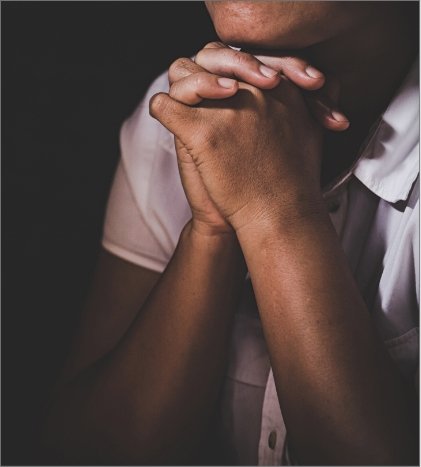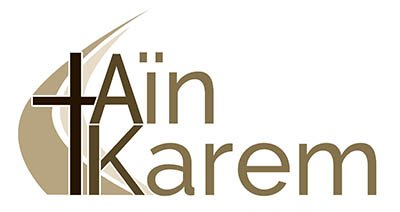Antenne locale
Toulouserelais.toulouse@mission-ismerie.com
Association catholique, Mission Ismérie est tournée vers nos frères de confession musulmane. Dans le respect absolu de chacun, de ses origines, de sa religion, de sa culture, bénévoles et permanents de Mission Ismérie témoignent du Christ qui les habite et proposent le chemin de la foi catholique.
Parce que c’est dans le dialogue en amitié que chacun se révèle en vérité, Mission Ismérie propose une culture de la rencontre sincère, à travers le Réseau Angelus et sur internet.

Par-delà l’indispensable annonce de l’évangile, il y a urgence aujourd’hui à accueillir nos frères et sœurs issus de milieux musulmans, qui sollicitent conseil, aide et soutien. Nos bénévoles sont généreux, nos partenaires nombreux, et nos initiatives résolument joyeuses.
Le Réseau Angelus agit dans toute la France, pour une plus grande communion entre l’ensemble des membres de l’Église, et contribue activement aux multiples projets pastoraux diocésains, grâce à ses initiatives concrètes :

Sur internet La Rencontre (appli, webradio, podcasts, vidéos, réseaux sociaux…) propose aux musulmans divers chemins vers le Christ, ainsi qu’aux convertis et plus largement à toute personne en quête de sens.
Avec de nombreux convertis, exemples exceptionnels de courage et de foi, Mission Ismérie veut œuvrer dans et pour l’Église, en apportant à chaque paroisse, chaque diocèse, chaque mouvement, des moyens concrets pour un dialogue d’annonce authentique avec nos amis musulmans.
PRIER – ANNONCER – ACCUEILLIR – ACCOMPAGNER – FORMER

Pour le Christ, « car Il veut que tous les hommes soient sauvés et parviennent à la pleine connaissance de la vérité. » (1 Timothée 2, 4). Ainsi nous cultivons une démarche de disciples-missionnaires : dialogue d’amitié et amour inconditionnel envers chacun, quelle que soit sa culture ou sa tradition spirituelle. Nous souhaitons agir avec humilité sur le chemin de la fraternité universelle, car tout chrétien a la responsabilité de témoigner sans oublier qu’il demeure lui-même « en conversion ».
Pour nos frères et sœurs en quête de sens : ceux qui se posent des questions sur la foi, ceux qui n’ont pas encore entendu la Bonne Nouvelle et ne connaissent pas Jésus, ceux qui sont issus de milieux non-chrétiens mais l’ont déjà mystérieusement « rencontré », ceux qui demandent à entrer dans l’Église et souhaitent cheminer vers le baptême…
En restant conscients que le terrain est parfois sensible, et en étant attentifs aux corps blessés, aux âmes fragilisés, aux situations de vulnérabilité.
Pour tous les malades, les souffrants et les esclaves de ce XXIe siècle. Parce que Jésus est véritablement présent, et qu’il continue de guérir les corps, de libérer les âmes, de délivrer les esprits. Parce qu’il est réellement vivant et prêt à sauver tout homme qui a foi en Lui : « Allez ! De toutes les nations faites des disciples : baptisez-les au nom du Père, et du Fils, et du Saint-Esprit, apprenez-leur à observer tout ce que je vous ai commandé. Et moi, je suis avec vous tous les jours jusqu’à la fin du monde. » (Matthieu 28, 19-20)
Pour servir l’Église et le Bien Commun, tout d’abord en faisant connaître le témoignage de joie, d’amour et de paix des convertis. Comme celui de Myriam : « Jésus est venu me chercher. Il m’a donné sa Vie, et tout a changé dans la mienne ! » Ensuite servir en mettant nos expériences et nos compétences à contribution, tout particulièrement pour améliorer l’accueil au sein de la communauté ecclésiale de ceux qui comme nous ont un parcours de vie en lien avec les milieux musulmans. Enfin servir en participant aux projets pastoraux diocésains, aux activités paroissiales locales, à la vie des communautés religieuses, et aux initiatives laïques soutenues par la conférence des évêques de France.


« J’ai fini par trouver sur ma route la porte de l’Église. Depuis le premier jour je n’ai cessé d’avoir soif, une soif inextinguible de communier à cet homme-Dieu. Il s’est révélé à moi, une nuit, dans une vision qui a transformé ma vie. Et parce que cette communion me procure une joie indicible, qu’elle comble mon cœur au-delà de l’imaginable, j’ose espérer que partout où l’Église est présente, je pourrai me sentir chez moi. »
Joseph
Chaque année en France, des centaines de baptêmes catholiques d’adultes sont ceux de musulmans convertis. Leur courage et leur témoignage sont souvent bouleversants, toujours inspirants, et particulièrement revivifiants pour l’Église.
Ismérie est une princesse musulmane du XIIe siècle, fille du sultan d’Égypte devenue chrétienne par l’intercession de la Vierge Marie. Son histoire est à l’origine du grand sanctuaire Notre-Dame de Liesse, près de Laon.
Le patronage d’Ismérie illustre le caractère fondamentalement pacifique et profondément spirituel de notre mission, il rappelle aussi la vocation particulière des catholiques français en matière d’annonce universelle et fraternelle de l’Évangile.
Oui, nous avons plus que jamais besoin de vous : spirituellement par la prière, concrètement par le bénévolat, matériellement par le don. Car notre réseau est actif et dynamique, mais nous recevons un nombre croissant de demandes, parfois urgentes et souvent complexes. Ainsi nous serions heureux de vous compter parmi nos membres ou nos amis, et ensemble rendre possible le déploiement d’actions décisives pour favoriser la rencontre du Christ.
Développer les initiatives de terrain, tout particulièrement grâce à l’expérience de Mission Ismérie auprès de nos frères et sœurs issus des milieux musulmans.
Être davantage présents sur internet et faire grandir La Rencontre, pour annoncer la Bonne Nouvelle à plus grande échelle (vidéos, podcasts, e-learning, tchat, réseaux sociaux…).
Multiplier les opportunités de pèlerinages à destination des convertis qui souhaitent découvrir la beauté culturelle et la force spirituelle des sanctuaires, en France comme à l’étranger.


Pour vous former avec Isabelle Didelin, responsable du Réseau Angelus, sur le thème : « Évangélisation : comment aller à la rencontre de l’autre et témoigner de sa foi dans le Christ ? »
Un lundi par mois, la communauté apostolique Aïn Karem (ainkarem.net) vous invite à prier, à nourrir votre foi et à la confronter aux grands défis de l’actualité en participant à des ateliers de réflexion thématiques. Cette soirée est adaptée à chacun ! Que l’on soit lointain, recommençant, engagé… nous n’avons jamais terminé de découvrir la richesse infinie de Dieu. Chaque thème est approfondi tout au long de l’année, ces ateliers mensuels auront lieu de 19h45 à 22h15, Au Bon Conseil, 6 rue Albert de Lapparent 75007 Paris.
Les prochaines dates : 27 mai. Une soirée de fin d’année est prévue pour le 10 juin. Il est possible de rejoindre le groupe à tout moment !

Après les succès « d’Ourra, le chemin des Apôtres » en 2012 et « Malkah, le temps des prophètes » en 2015, le nouveau spectacle musical d’Eric Libault « Yeshoua, Amour est son nom » sera présenté pour la première fois à partir du 27 janvier 2024. Informations et inscriptions sur yeshoua.org
Mission Ismérie est partenaire de ce spectacle musical à « vivre », fort et lumineux, une expérience unique pour cultiver l’espérance et la recherche de sens dans nos vies. Aussi une belle occasion pour se rencontrer, venez nombreux !
Téléchargez le dossier de presse : en cliquant ici
Spi&Spi :
Spi pour spirituel
Spi pour spiritueux
Vous avez entre 25 et 35 ans ? Vous habitez la région angevine ? Vous voulez approfondir votre foi et vous aimez les spiritueux ? Cette formation est faite pour vous !
Un mardi par mois, dans le bar «A boire et à manger», 7 place de la Visitation, découvrez la possibilité d’approfondir votre foi tout en partageant un moment convivial dans l’apprentissage de la dégustation de vins.
Cette année, le Réseau Angelus donne des formations sur le thème :
« Dialogue et Annonce auprès des musulmans ».
Il est bien sûr possible de rejoindre la formation au cours de l’année.
Les dates et thèmes à venir :
14 mai : Les témoignages des saints dans la rencontre avec les musulmans II
4 juin : Annoncer le Christ aux musulmans
Rejoignez le groupe d’évangélisation du relais local de Toulouse, de 10h30 à 15h30, retrouvez :
Les dates à retenir :
Pour le samedi 27 avril un temps d’évangélisation sera proposé de 15h à 16h
Contact : relais.toulouse@mission-ismerie.com
Rejoignez le groupe d’évangélisation de Grasse à la paroisse Saint-Honorat et retrouvez :
14h : Formation, louange et envoi en mission par binômes.
17h30 : Relecture du temps d’évangélisation, goûter et temps convivial
18h30 : Messe
Les dates à retenir :
19 mai
23 juin
Contact : relais.nice@mission-ismerie.com
L’écosystème missionnaire du dialogue et du témoignage est animé par de multiples sensibilités, grâce à des institutions, mouvements et associations complémentaires. Dans cet écosystème, Mission Ismérie vit sa vocation en esprit de service, en communion au sein de l’Église et en lien avec diverses initiatives sœurs, notamment Mission Angelus, Eleutheros, Anuncio Mission, Aïn Karem, La Nuit pour la Mission, Yeshoua – Amour est son nom, Congrès Mission, Lève-toi et marche, Famissio…
Vous êtes musulman et vous avez des questions sur la Bible, sur la foi, sur Jésus ?
N’hésitez pas à venir en discuter, des chrétiens seront heureux de faire votre connaissance.
